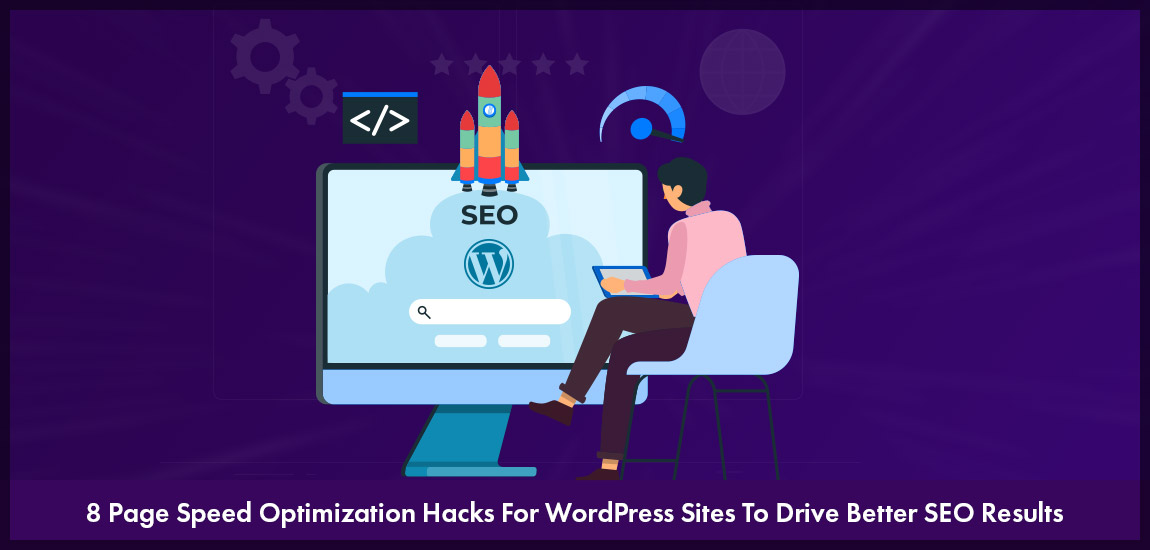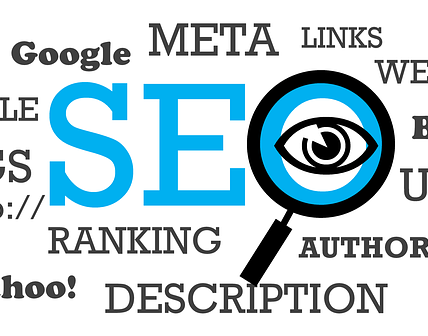-
Table of Contents
“Boost Your SEO with Lightning-Fast Websites”
Introduction:
Optimizing website speed is crucial for improved SEO performance. In today’s fast-paced digital world, users expect websites to load quickly and efficiently. A slow-loading website not only frustrates users but also negatively impacts search engine rankings. Search engines like Google prioritize websites that provide a seamless user experience, including fast loading times. Therefore, optimizing website speed is essential to enhance SEO performance and increase organic traffic. In this article, we will explore various strategies and techniques to optimize website speed, ensuring a better user experience and improved search engine visibility.
The Impact of Website Speed on SEO Rankings
The Impact of Website Speed on SEO Rankings
In today’s digital age, having a strong online presence is crucial for businesses to thrive. One of the key factors that can make or break a website’s success is its speed. Website speed not only affects user experience but also plays a significant role in search engine optimization (SEO) rankings. In this article, we will explore the impact of website speed on SEO rankings and discuss how optimizing website speed can lead to improved SEO performance.
First and foremost, it is important to understand that search engines, such as Google, prioritize user experience when determining search rankings. They aim to provide users with the most relevant and high-quality results. Slow-loading websites can be frustrating for users, leading to a poor user experience. As a result, search engines tend to penalize slow websites by pushing them down in the search results.
Furthermore, website speed is a crucial ranking factor for mobile searches. With the increasing use of smartphones and tablets, mobile optimization has become a top priority for businesses. Google, in particular, has emphasized the importance of mobile-friendly websites and has even introduced mobile-first indexing. This means that Google primarily uses the mobile version of a website for indexing and ranking purposes. Therefore, having a fast-loading mobile website is essential for improving SEO rankings.
In addition to user experience and mobile optimization, website speed also impacts other important SEO metrics. For instance, bounce rate, which refers to the percentage of visitors who leave a website after viewing only one page, is strongly influenced by website speed. Slow-loading websites tend to have higher bounce rates as users are more likely to abandon a website if it takes too long to load. High bounce rates can negatively impact SEO rankings as search engines interpret them as a sign of poor content or user experience.
Moreover, website speed affects the crawlability and indexability of a website. Search engine bots constantly crawl websites to gather information and index them in their databases. If a website takes too long to load, search engine bots may not be able to crawl and index all of its pages effectively. This can result in certain pages not being included in search engine results, leading to decreased visibility and lower SEO rankings.
Now that we understand the impact of website speed on SEO rankings, let’s discuss how to optimize website speed for improved SEO performance. One of the first steps is to minimize server response time. This can be achieved by choosing a reliable hosting provider and optimizing server configurations. Additionally, compressing files, such as images and scripts, can significantly reduce page load times.
Another important aspect to consider is browser caching. By enabling browser caching, website owners can instruct a user’s browser to store certain files, such as images and CSS, so that they don’t have to be reloaded every time the user visits the website. This can greatly improve website speed and overall user experience.
Furthermore, optimizing code and reducing the number of HTTP requests can also contribute to faster website speed. Minifying CSS and JavaScript files, as well as combining multiple files into one, can help reduce the number of requests made to the server, resulting in faster page load times.
In conclusion, website speed plays a crucial role in SEO rankings. Slow-loading websites not only provide a poor user experience but also face penalties from search engines. Optimizing website speed is essential for improving SEO performance. By minimizing server response time, enabling browser caching, and optimizing code, website owners can enhance their website’s speed and ultimately achieve higher SEO rankings.
Effective Techniques for Speeding Up Website Loading Time
Optimizing Website Speed for Improved SEO Performance
In today’s fast-paced digital world, website speed plays a crucial role in determining the success of a website. Not only does it impact user experience, but it also affects search engine optimization (SEO) performance. Slow-loading websites can frustrate users, leading to higher bounce rates and lower conversion rates. Moreover, search engines like Google consider website speed as a ranking factor, making it essential for website owners to prioritize optimizing their site’s loading time.
There are several effective techniques that can be employed to speed up website loading time. One of the first steps is to optimize images. Images are often the largest files on a webpage and can significantly slow down loading times. By compressing images without compromising their quality, website owners can reduce file sizes and improve loading speed. Additionally, using the appropriate image format, such as JPEG or PNG, can further enhance loading times.
Another technique to consider is minifying CSS and JavaScript files. These files contain code that determines the appearance and functionality of a website. However, they can also be quite large and slow down loading times. By removing unnecessary characters, spaces, and line breaks from these files, website owners can reduce their size and improve loading speed. There are various online tools and plugins available that can automatically minify these files, making the process easier for website owners.
Caching is another effective technique for speeding up website loading time. Caching involves storing a version of a webpage on a user’s device or a server, allowing subsequent visits to load faster. By enabling browser caching, website owners can instruct a user’s browser to store certain files, such as images and CSS files, locally. This way, when a user revisits the website, their browser can retrieve these files from the cache instead of downloading them again, resulting in faster loading times.
Furthermore, optimizing the website’s code and reducing the number of HTTP requests can significantly improve loading speed. Bloated or inefficient code can slow down a website’s performance. By optimizing the code, removing unnecessary elements, and reducing the number of HTTP requests required to load a webpage, website owners can enhance loading times. This can be achieved by combining CSS and JavaScript files, using CSS sprites, and implementing lazy loading for images.
Lastly, choosing a reliable web hosting provider is crucial for website speed optimization. The server’s performance and location can greatly impact loading times. Opting for a hosting provider that offers fast servers and has data centers located closer to the target audience can result in faster loading speeds. Additionally, considering a content delivery network (CDN) can further improve loading times by distributing website content across multiple servers worldwide.
In conclusion, optimizing website speed is essential for improved SEO performance. Slow-loading websites not only frustrate users but also negatively impact search engine rankings. By employing effective techniques such as optimizing images, minifying CSS and JavaScript files, enabling caching, optimizing code, and choosing a reliable web hosting provider, website owners can significantly enhance loading times. Prioritizing website speed optimization will not only improve user experience but also boost search engine rankings, ultimately leading to increased traffic and conversions.
Importance of Mobile Optimization for Website Speed and SEO
In today’s digital age, having a fast and responsive website is crucial for businesses looking to succeed online. Not only does a slow-loading website frustrate users, but it can also have a negative impact on search engine optimization (SEO) performance. With the increasing use of mobile devices for browsing the internet, optimizing website speed for mobile has become more important than ever.
Mobile optimization refers to the process of ensuring that a website is designed and developed to provide an optimal user experience on mobile devices. This includes factors such as responsive design, fast loading times, and easy navigation. With the majority of internet users now accessing websites through their smartphones and tablets, it is essential for businesses to prioritize mobile optimization.
One of the key reasons why mobile optimization is crucial for website speed and SEO performance is the fact that Google considers mobile-friendliness as a ranking factor. In 2015, Google introduced mobile-first indexing, which means that the search engine primarily uses the mobile version of a website’s content to determine its ranking in search results. This means that if your website is not optimized for mobile, it may not rank as high in search engine results pages (SERPs).
Furthermore, website speed is a critical factor in both user experience and SEO. Research has shown that users expect websites to load within a few seconds, and if a website takes too long to load, they are likely to abandon it and move on to a competitor’s site. This not only leads to a loss of potential customers but also negatively impacts your website’s bounce rate, which is a metric that search engines take into account when determining rankings.
When it comes to mobile optimization, website speed becomes even more important. Mobile networks are generally slower and less reliable than fixed-line connections, which means that users on mobile devices are more sensitive to slow-loading websites. In fact, studies have shown that mobile users are even more likely to abandon a website if it takes too long to load compared to desktop users.
To optimize website speed for mobile, there are several best practices that businesses should follow. Firstly, implementing responsive design is crucial. Responsive design ensures that your website adapts to different screen sizes and devices, providing a seamless user experience across all platforms. This not only improves user satisfaction but also helps with SEO performance.
Another important factor to consider is optimizing images and other media files. Large image files can significantly slow down a website’s loading time, especially on mobile devices with limited bandwidth. Compressing images and using the appropriate file formats can help reduce file sizes without compromising on quality.
Additionally, minimizing the use of plugins and scripts can also improve website speed. While plugins and scripts can add functionality to your website, they can also increase loading times. It is important to regularly review and remove any unnecessary plugins or scripts to ensure optimal performance.
In conclusion, mobile optimization is crucial for website speed and SEO performance. With the increasing use of mobile devices for browsing the internet, businesses must prioritize mobile optimization to provide a seamless user experience and improve their search engine rankings. By implementing responsive design, optimizing images, and minimizing the use of plugins and scripts, businesses can ensure that their website loads quickly and efficiently on mobile devices, ultimately leading to improved SEO performance.In conclusion, optimizing website speed is crucial for improved SEO performance. A faster website not only enhances user experience but also positively impacts search engine rankings. By implementing various techniques such as optimizing images, minifying code, leveraging browser caching, and using content delivery networks, website owners can significantly improve their website’s speed and ultimately boost their SEO performance.





